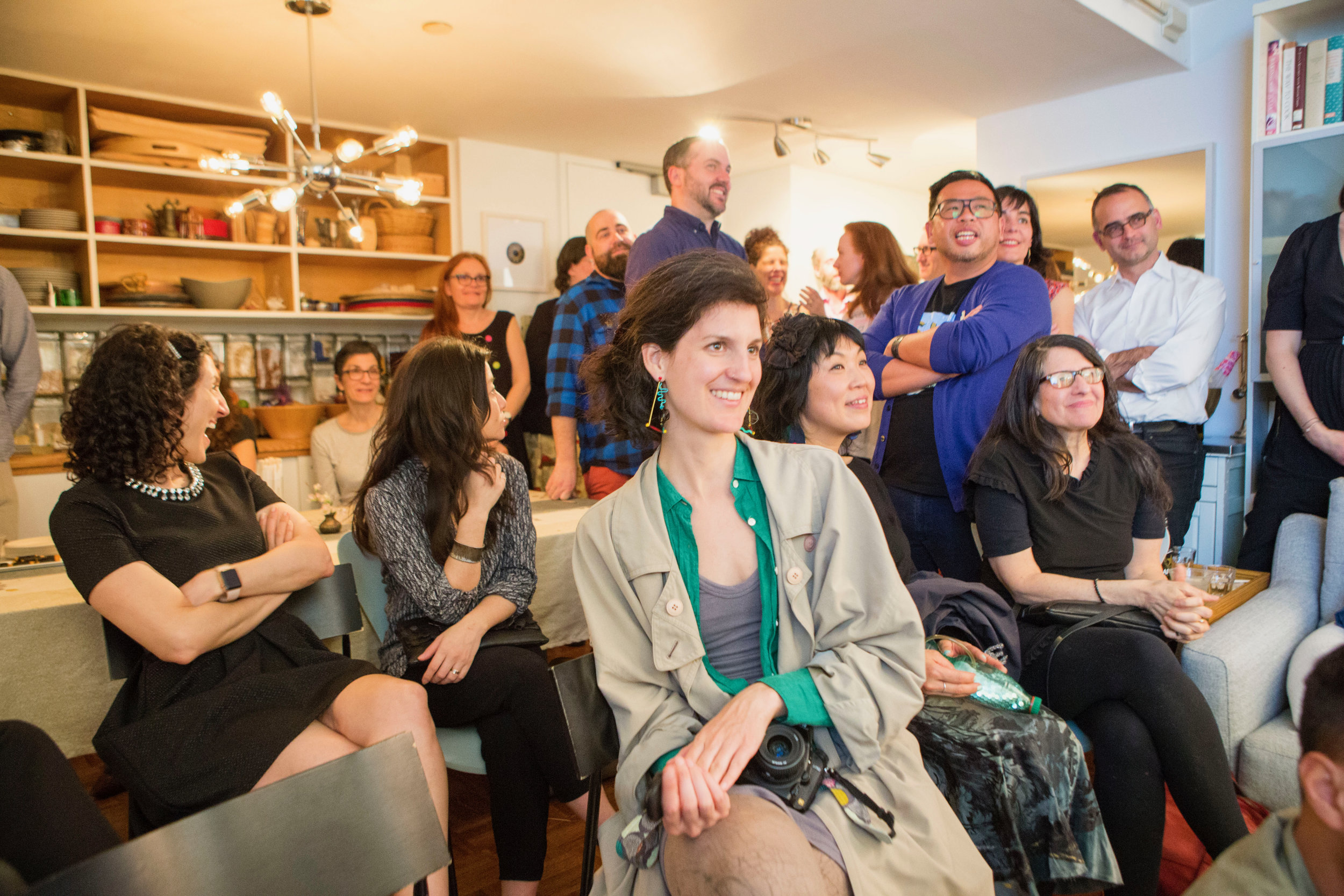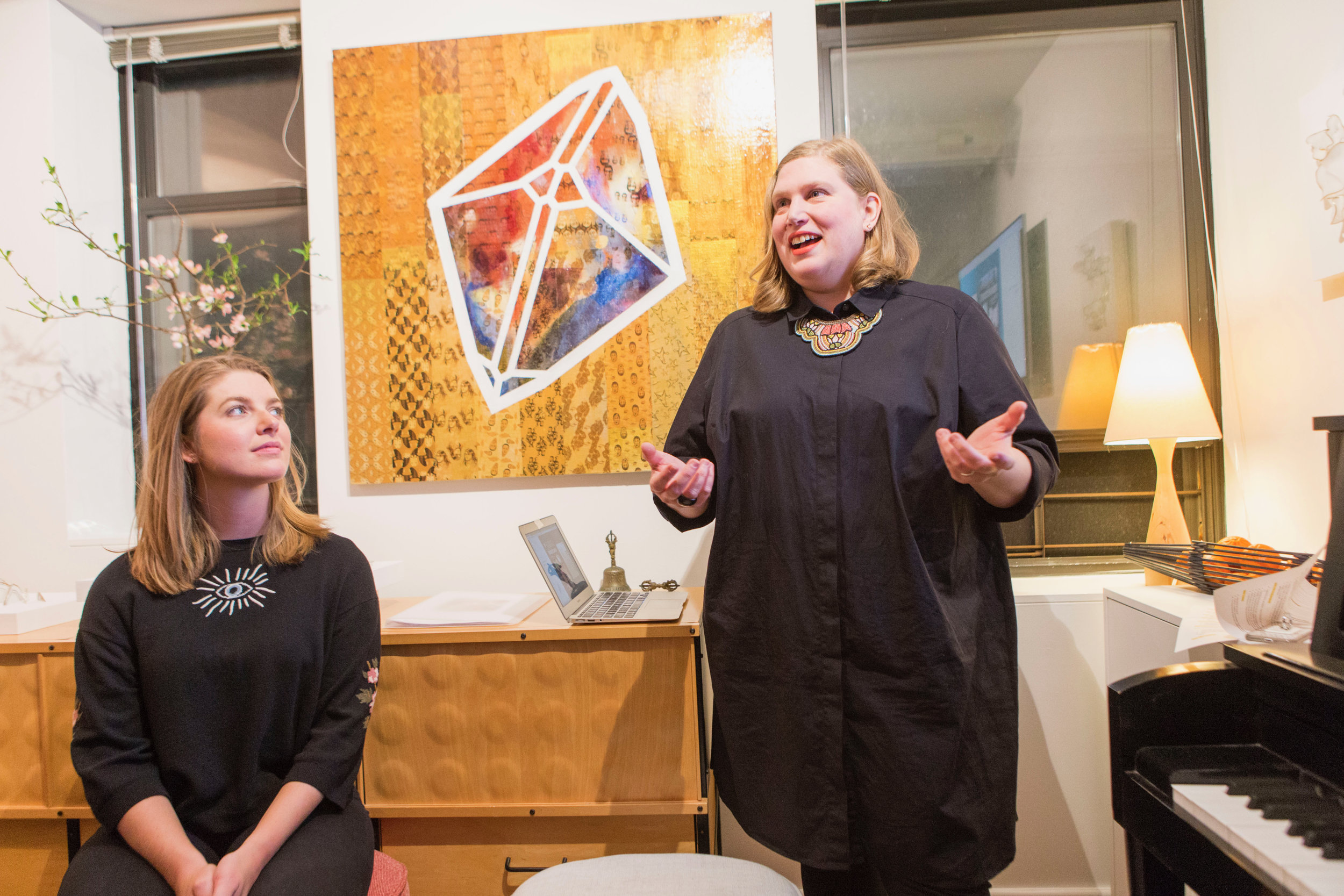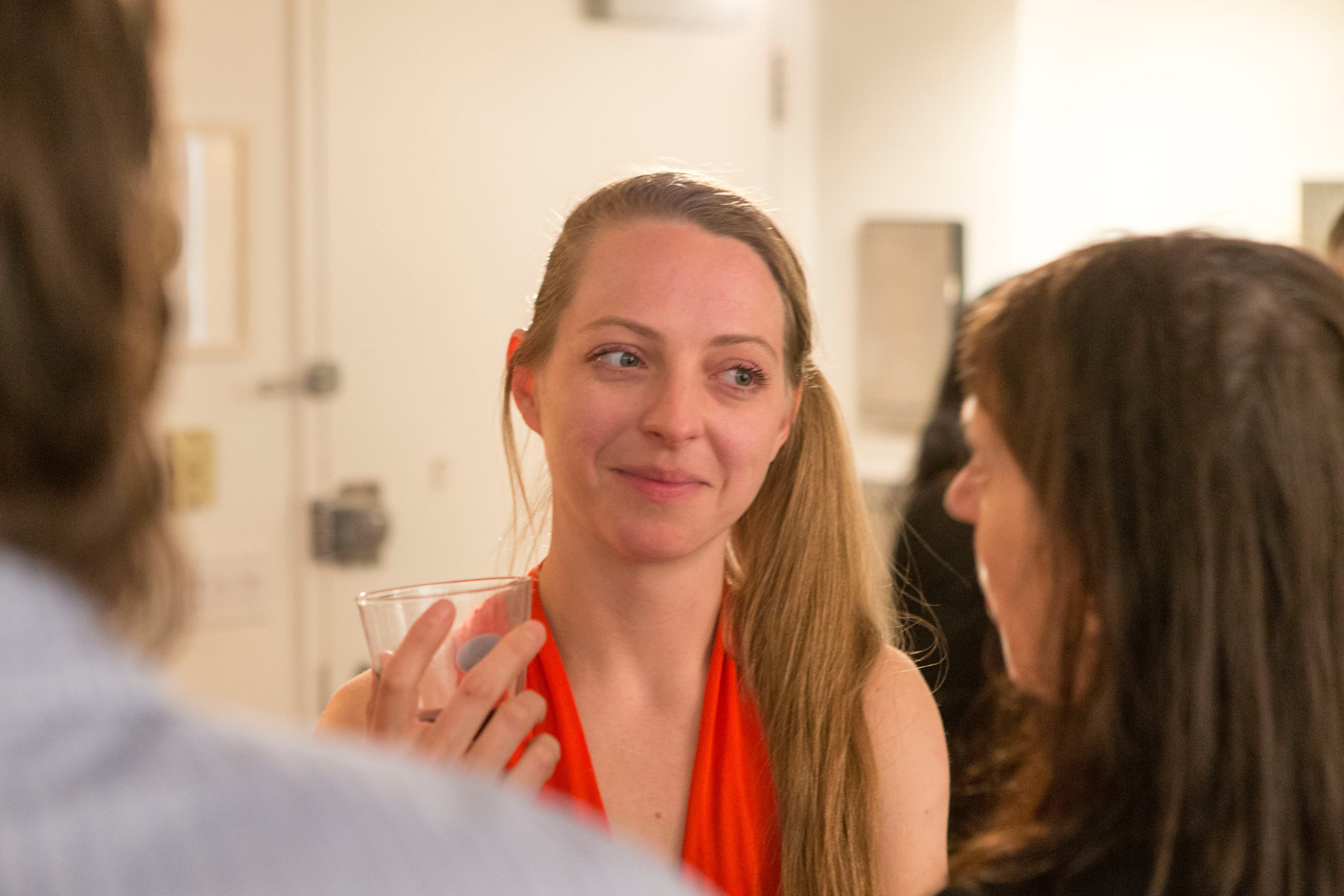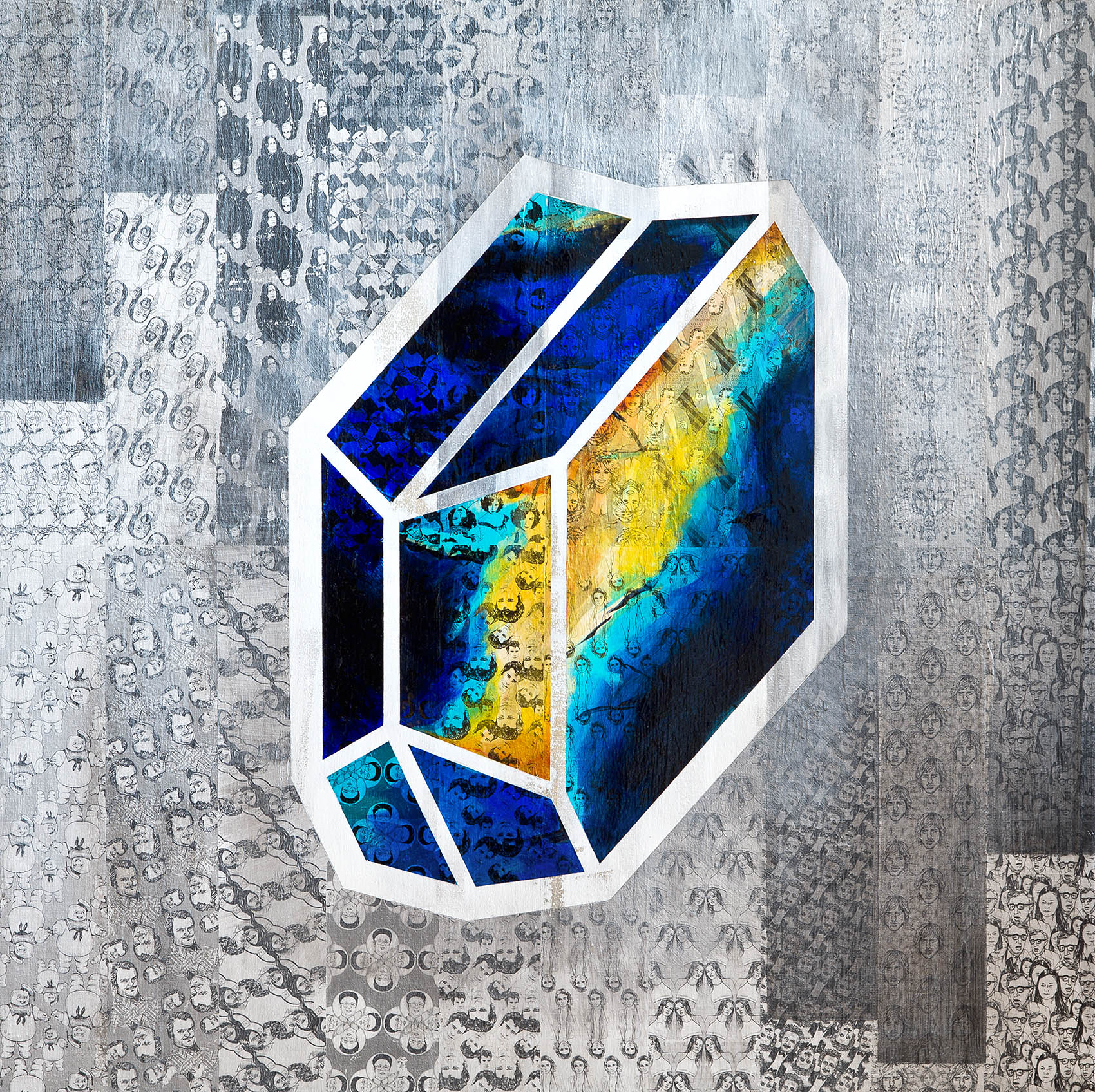On Saturday, April 6th, the Society for Domestic Museology celebrated the opening of to interpret, a solo exhibition of work by artist Natale Adgnot that explores the human impulse to find meaning in visual patterns. The exhibition drew from two very different series that play with the way this drive to interpret informs not only our shared cultural norms but the very process of creating art.
I met Natale last fall when she joined several artists in opening their studios in Gowanus, Brooklyn, to a small group tour organized by the Society. Originally from Texas, she has lived in various and dramatically different places, including more than a decade in Paris (her husband, Sébastien, is French) and three years in Tokyo before returning to Brooklyn last year. The work she shared was inspired by the experience of orienting herself to new environments and making sense of her surroundings—and how that process can reveal one’s own assumptions and patterns of thought.
Labradorite II. 2016
Acrylic and acrylic transfer on linen
39.5" W x 39.5" H x 1" D
Mineral Series
Two of the pieces Natale showed came from a series of mixed-media paintings based on the crystal diagrams and physical properties of minerals. She became fascinated by mineralogy back in 2013, when she came across a book on the subject while on vacation in France. As she learned more about the properties by which minerals are classified and described—color, hardness, transparency, luster, magnetism, and density—she noted how the same qualities are routinely used to characterize and categorize people. Her series, Mineral Paintings, uses the properties of different minerals to taxonomize human traits and characteristics through the prism of American celebrity.
To create these large acrylic paintings (measuring 40” x 40”), Natale started by creating her own system of cultural interpretation by mapping human attributes—represented by miniature portraits American entertainment and political luminaries—onto the spectrum of mineralogical properties. She hand drew each portrait, scanned them, and digitally manipulated them into patterns that were then applied to the canvas using acrylic transfer. According to the Mohs scale of mineralogical hardness, #1 is talc while #10 is diamond. In Labradorite II, the hardness scale is represented by the Stay Puft Marshmallow Man from Ghostbusters at the low end and cinematic tough guy Clint Eastwood at the hard end. Likewise, the property of “high cleavage” is illustrated by the bosomy Dolly Parton while “low cleavage” by the flat-chested Keira Knightley, in a not-so-subtle commentary on our American obsession with breasts. Although they contain widely recognizable figures, Natale’s taxonomies are also highly personal and particular to the time and place the painting was created. The passage of time only accentuates the capricious nature of cultural stereotypes and the inherent subjectivity beneath the impulse to classify people.
Xenotime (Byobu) 2016
Acrylic and acrylic transfer on linen
39.5" W x 39.5" H x 1"
When Natale moved to Tokyo in 2015, she decided to apply the structure of this practice in an attempt to understand Japanese cultural references. Having received a research residency at Tokyo Wonder Site (now known as Tokyo Arts and Space), she set about trying to interpret the double meanings and cultural connotations of mineralogical properties like density, hardness, cleavage, etc. Here, for instance, the interpretation of cleavage is political, contrasting Prime Minister Shinzo Abe as a leader whose policies have sharply divided Japanese public opinion with 17th-century Shogun unifier Ieyasu Tokugawa. These works function both as a way to reveal the human tendency toward classification and also as a personal history, documenting her own navigation of the different cultures in which she has lived. She will soon be starting a new series of these paintings addressing her relationship to France, where she became a citizen in 2017.

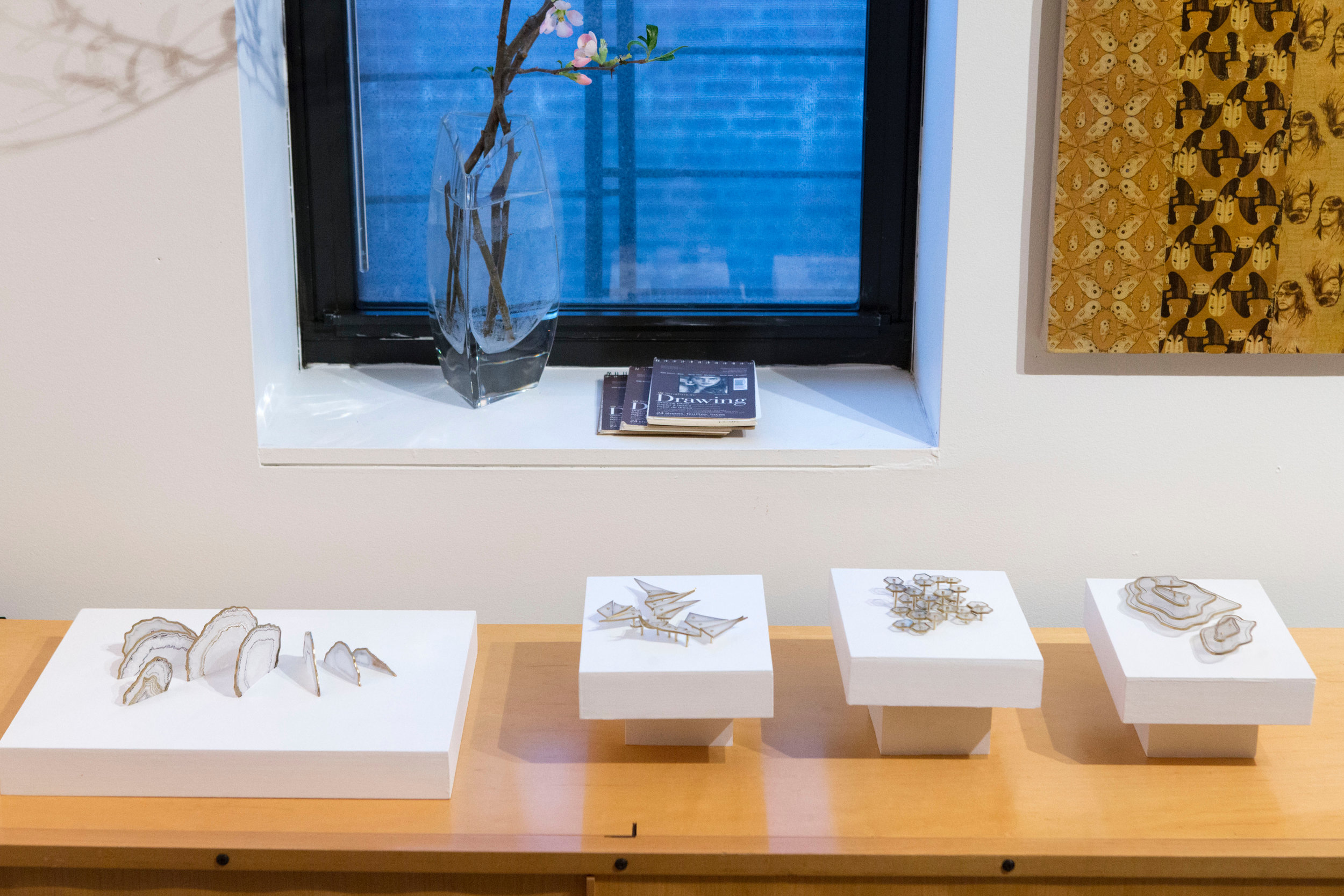
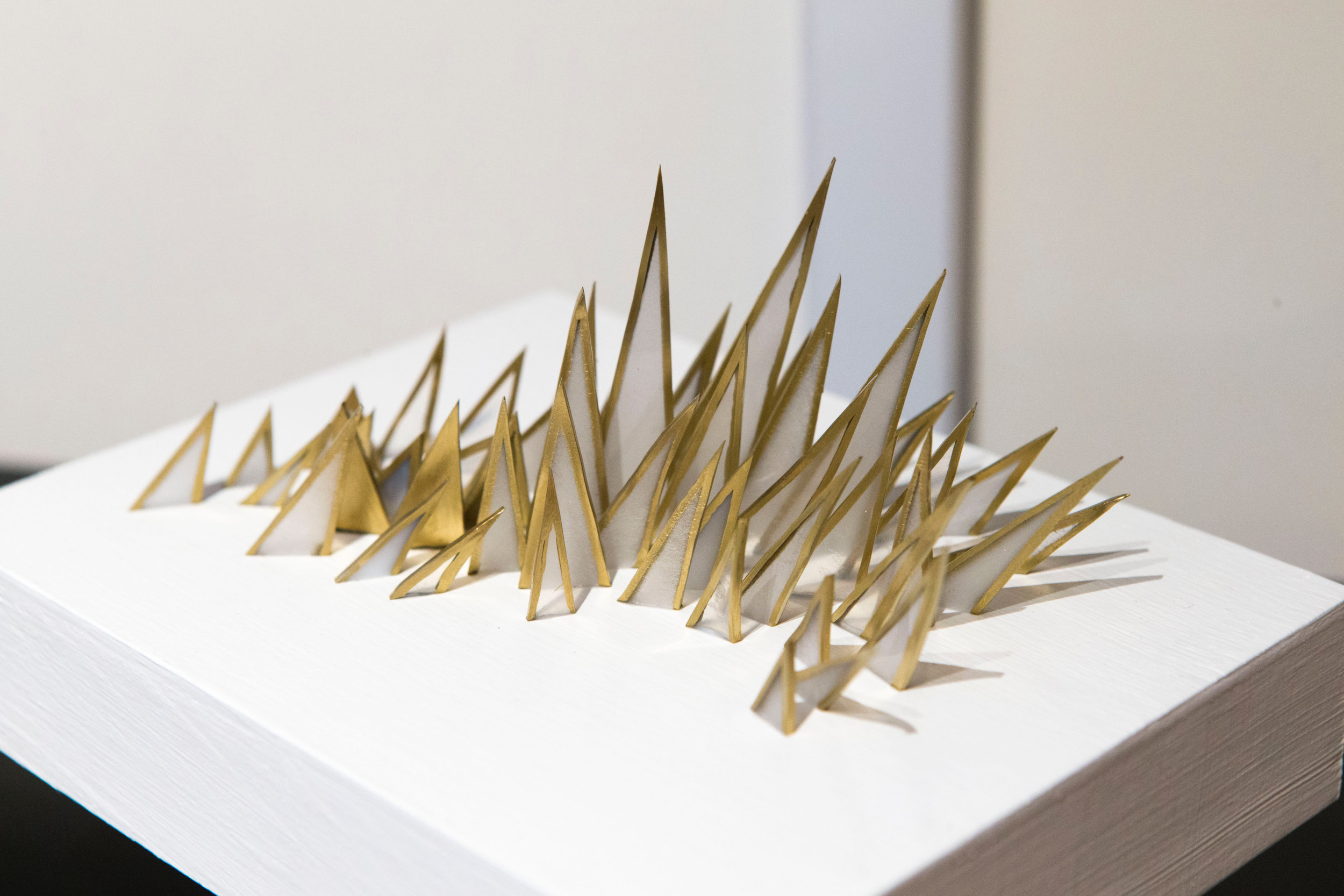
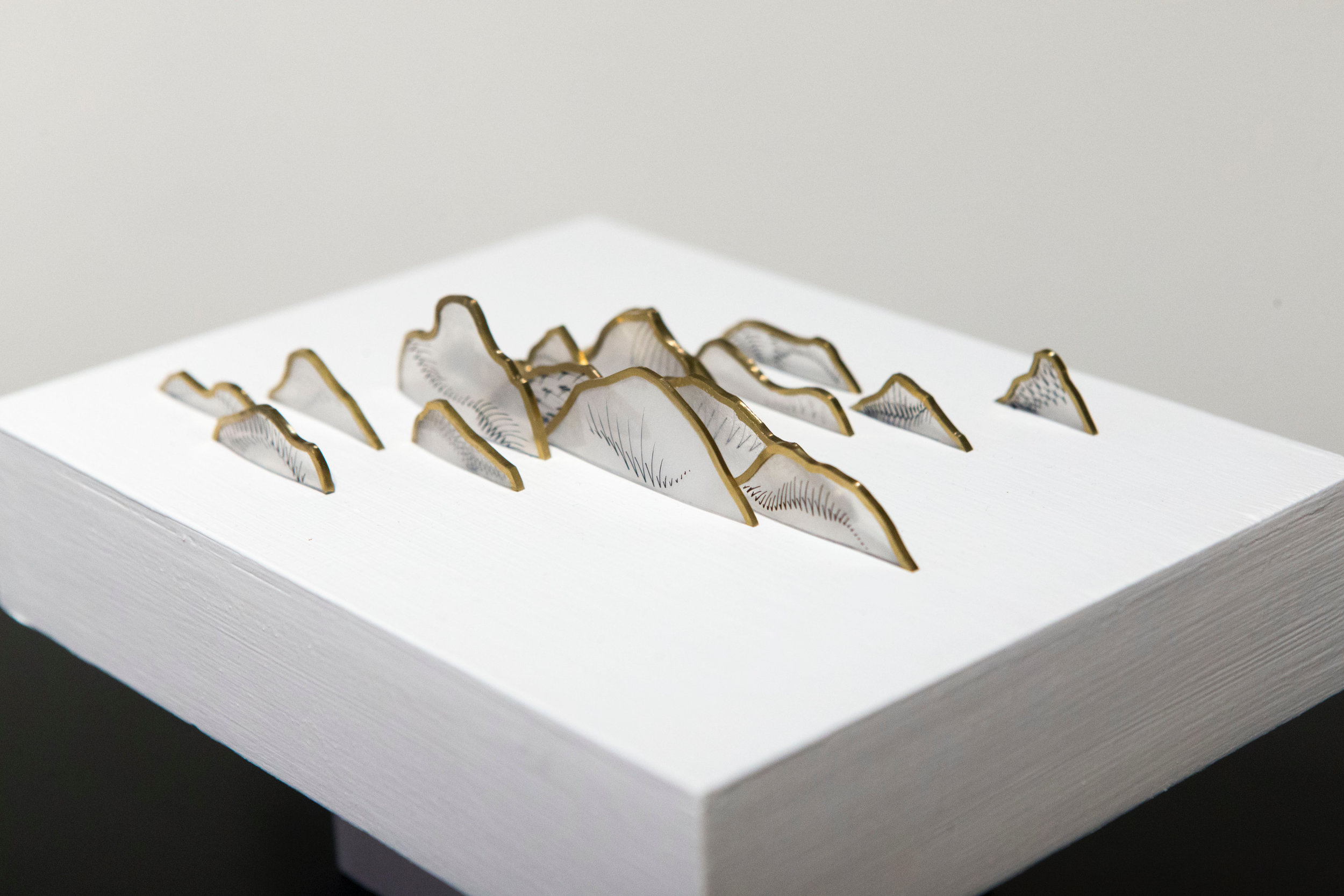

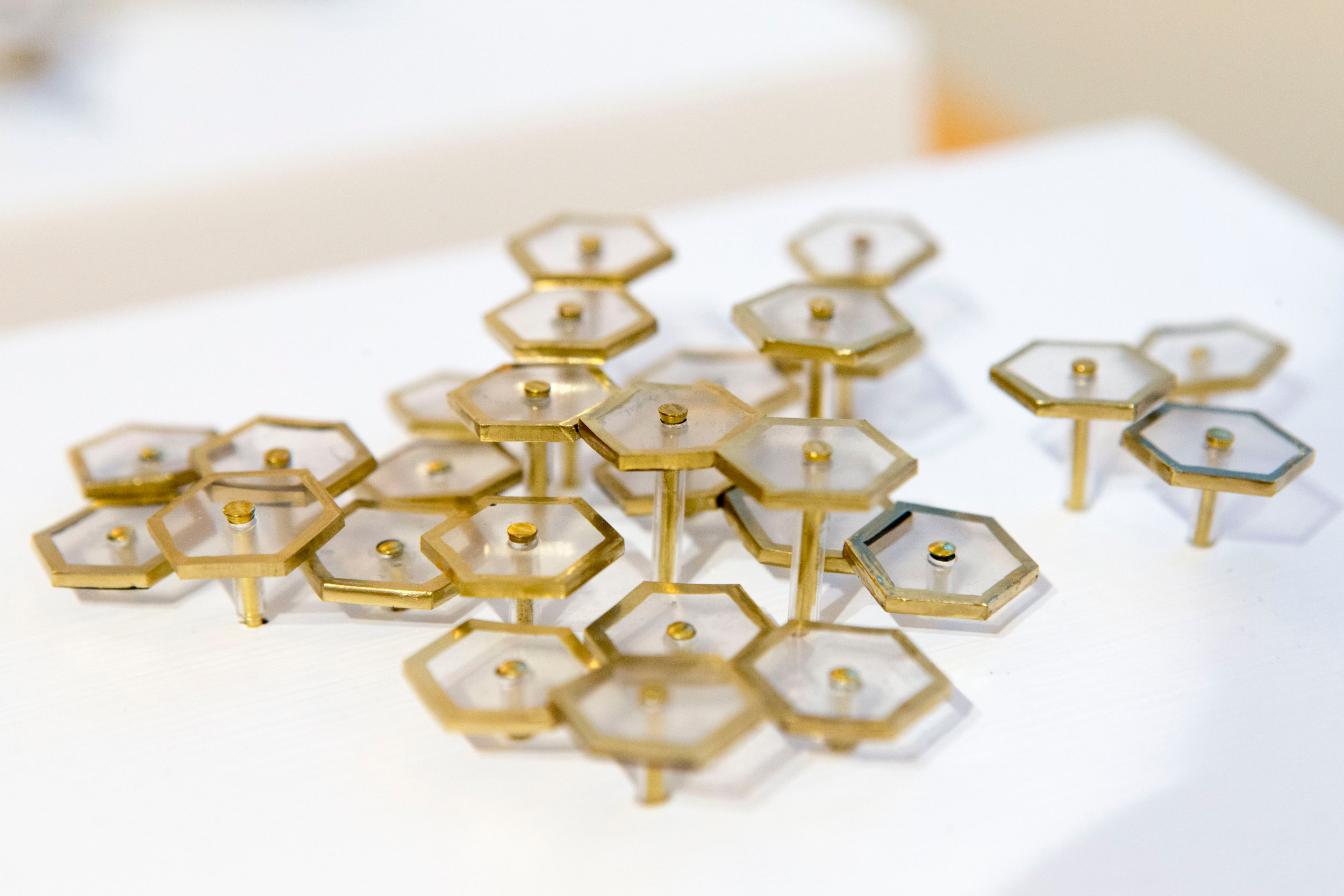
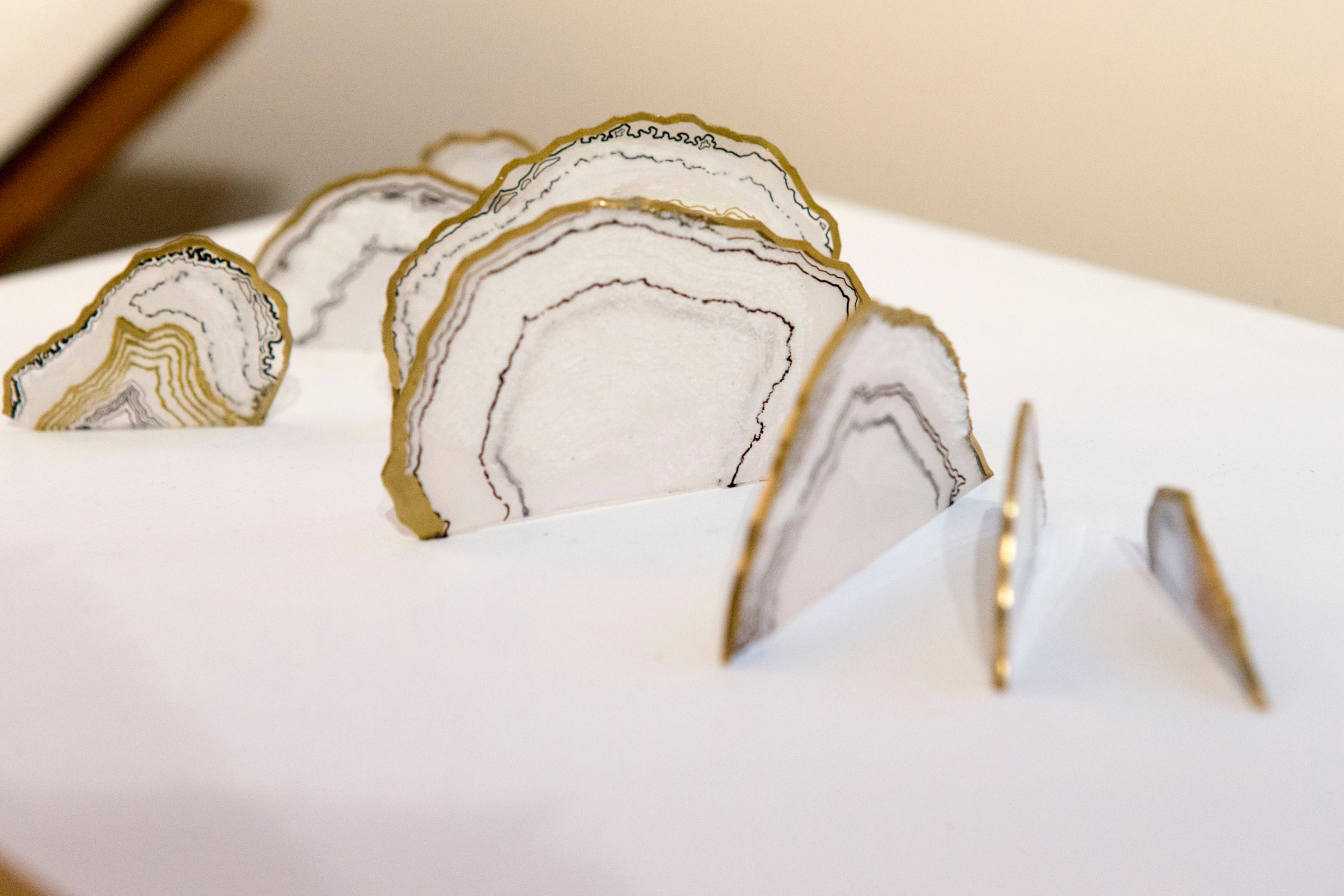
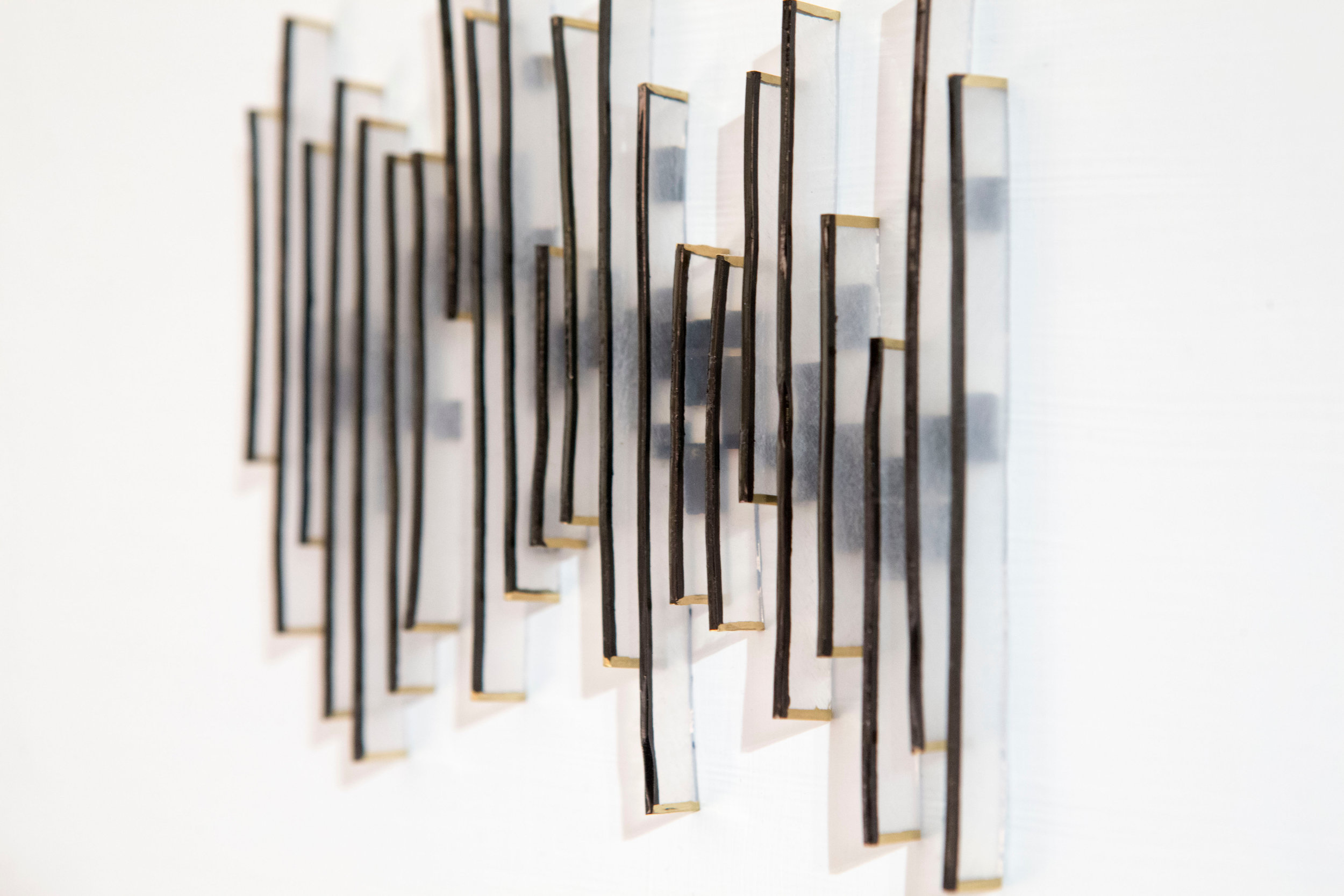

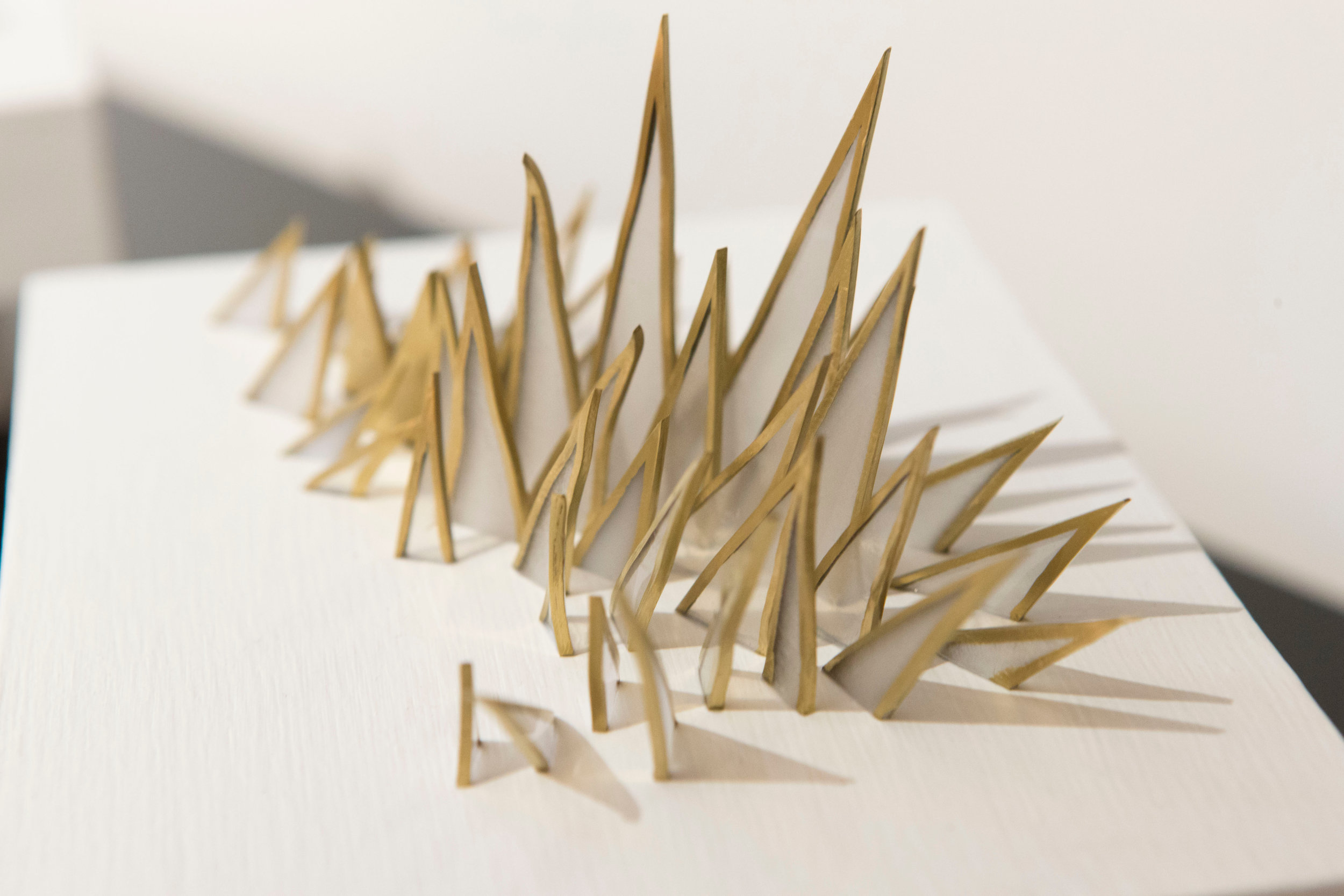
Drawing in 3D
As a counterpoint to the large-scale complexity of the Mineral Paintings, Natale was yearning for a more immediate project. She had begun keeping a sketch journal when she first moved to New York City, and by 2017 she had filled almost 30 books with her daily black and white drawings. Each day, her goal would be to create a balanced composition based on an arbitrary set of rules she would set out in the first set of abstract markings. Though these exercises are purely formal, their use of pattern connects them to the Mineral Paintings and relate to Natale’s larger theme of examining false equivalencies (often as a result of misreading patterns) and stereotypes.
Working with her vast trove of drawings, Natale distills them further by converting elements of her patterned drawings into small-scale 3D sculptures made out of thermal plastic. With a limited palette of black, white, and gold, the new iterations of the patterns can be viewed from multiple angles, sitting flat on a tabletop or mounted on the wall. Once the compositions are finished, she names them in her final act of interpretation
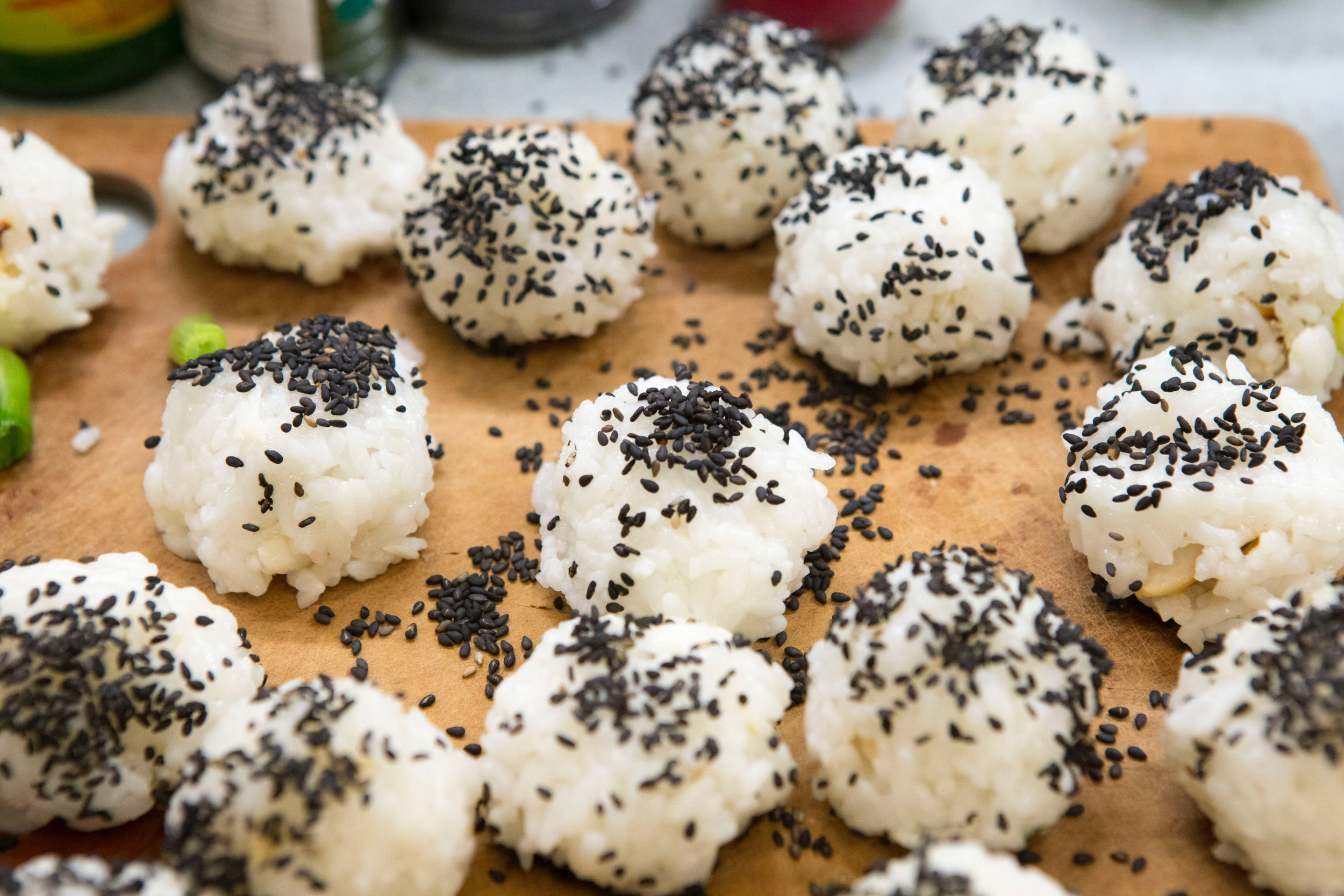
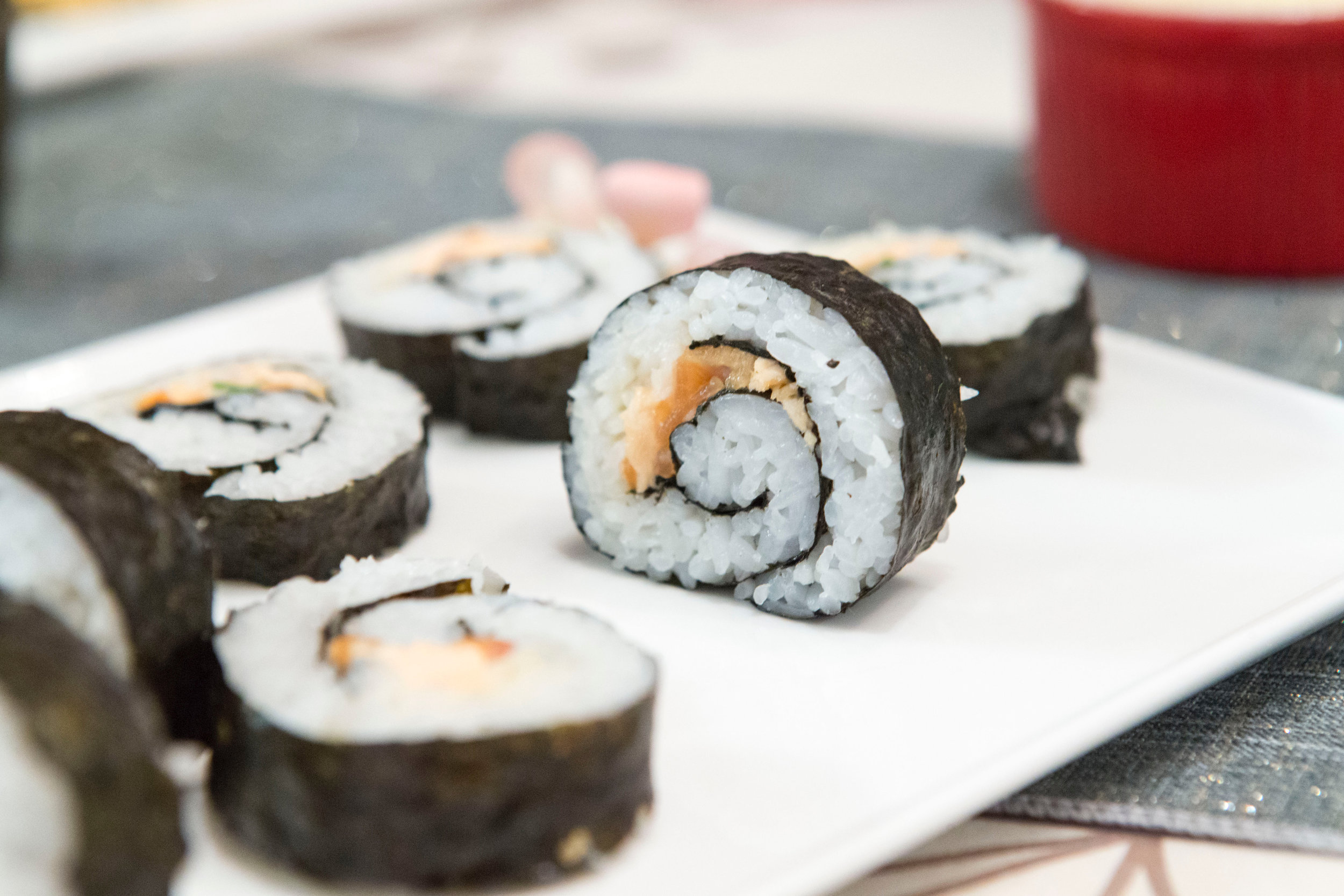
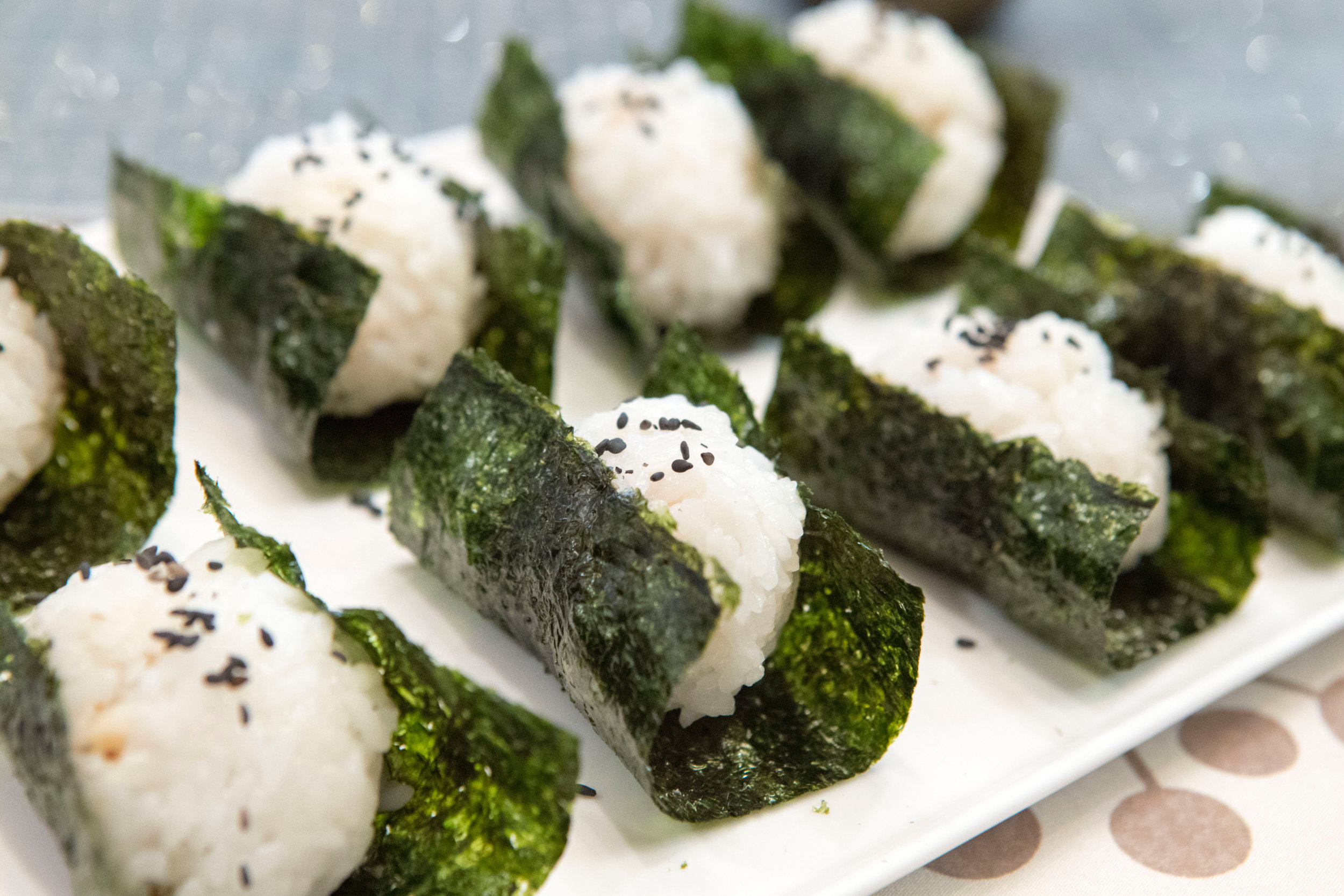

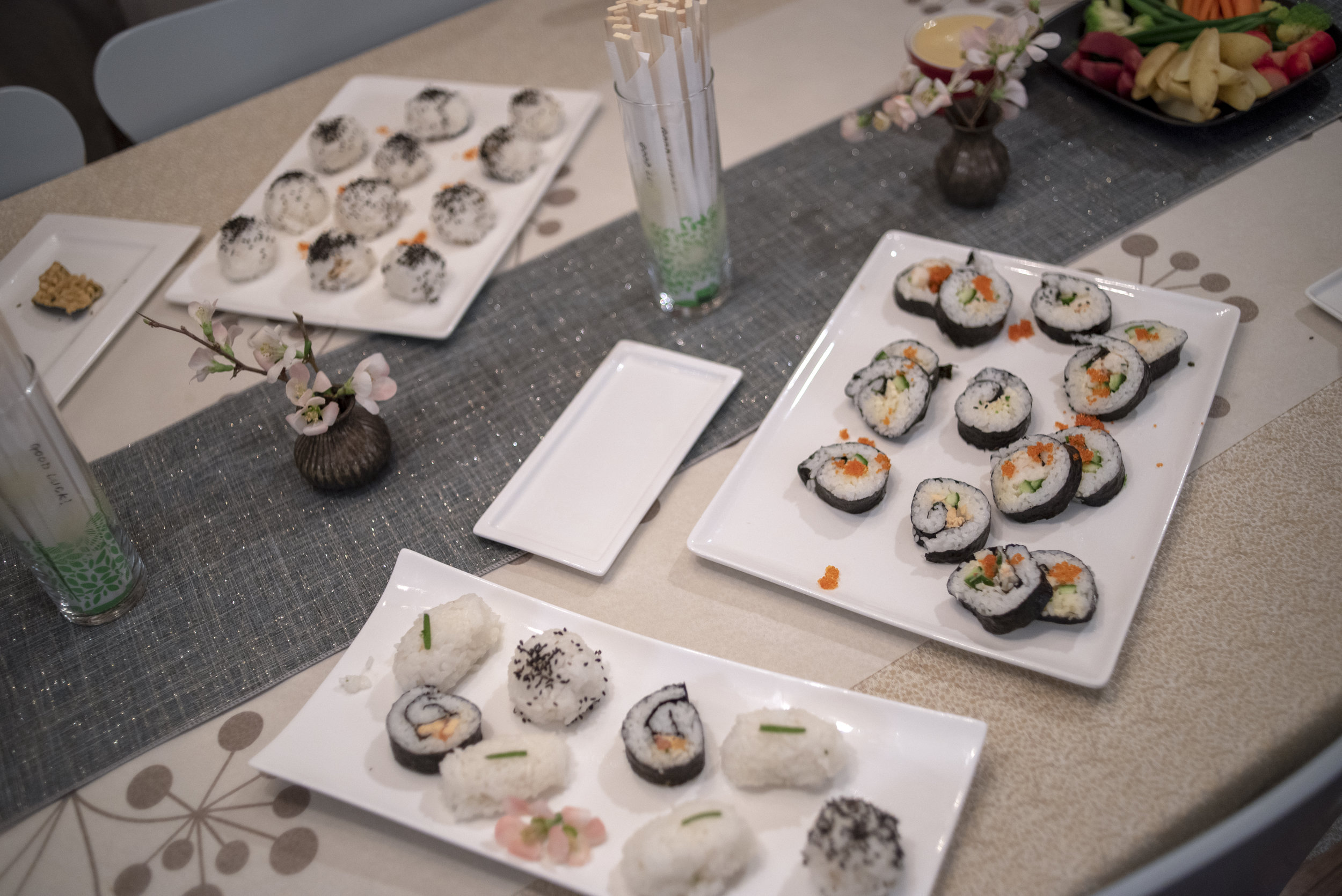
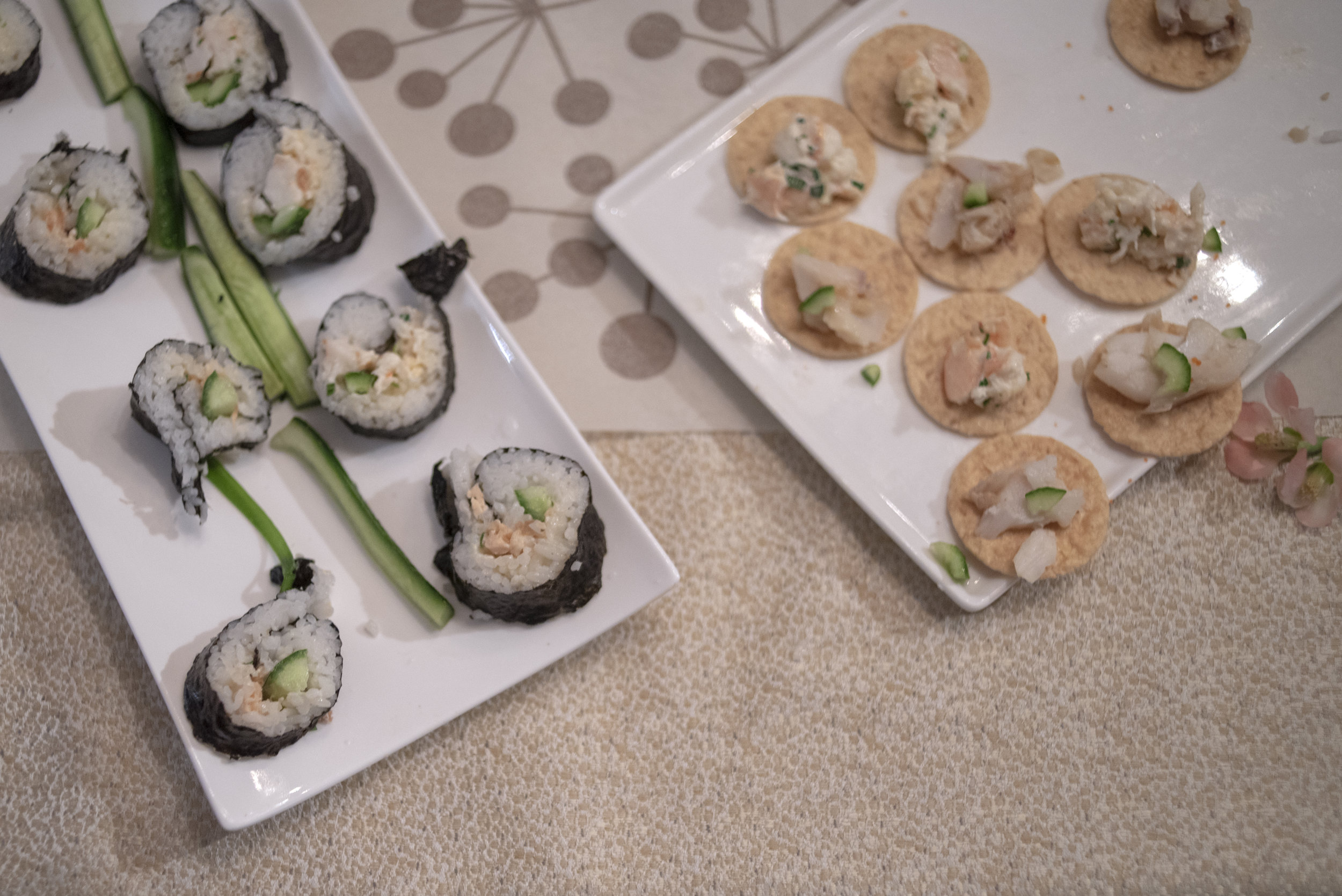
Because of the Japanese influence on her work and aesthetic, we decided on a Japanese-inspired menu for our opening, attempting to make sushi platters to mimic her 3-D drawings and serving onigiri, yakitori, pickled vegetables, matcha cheesecake, and mini cupcakes with fondant lotus leaves, courtesy of Clarelicious. Almost 50 people crowded into our living room to hear Natale present her work and talk about the way arbitrary mark-making, pattern, and the human impulse to categorize and stereotype can be interpreted visually.
